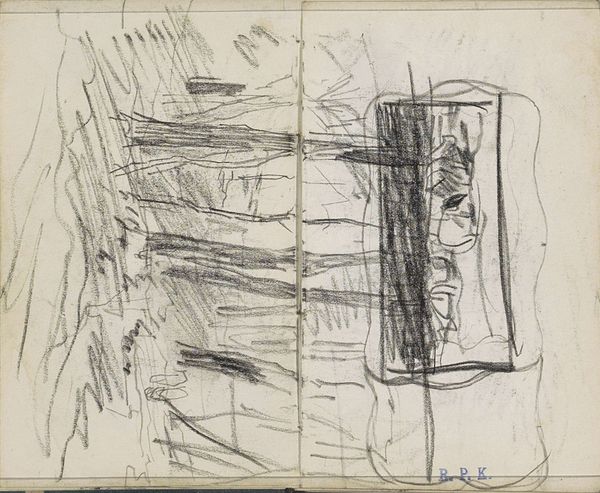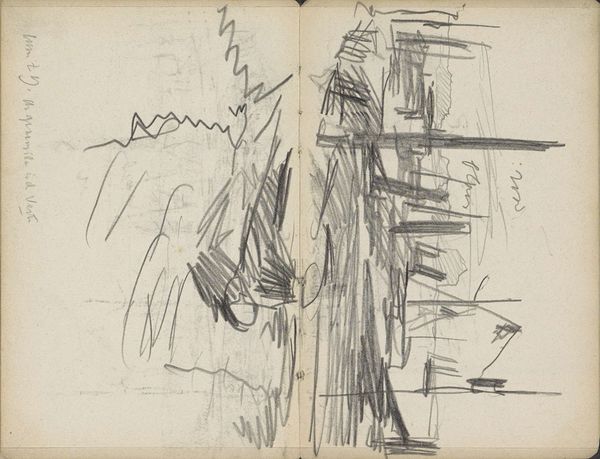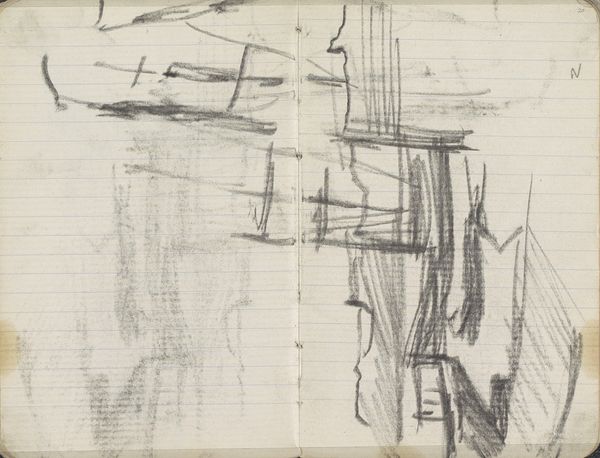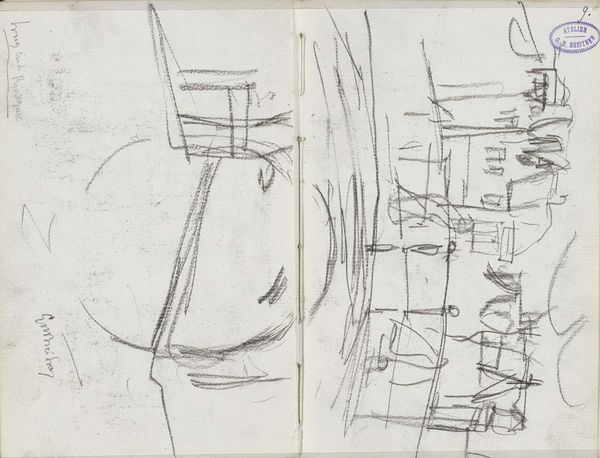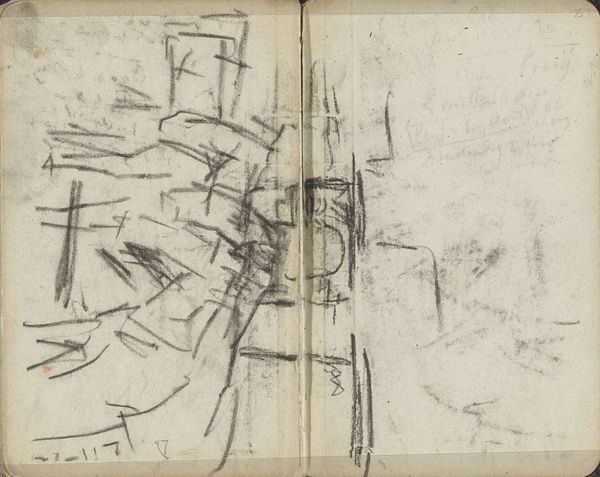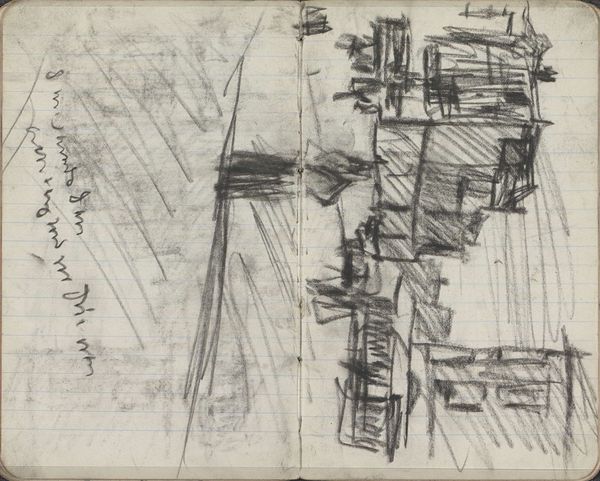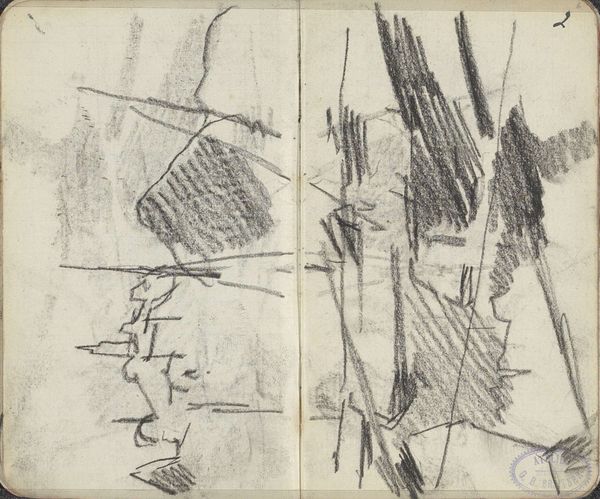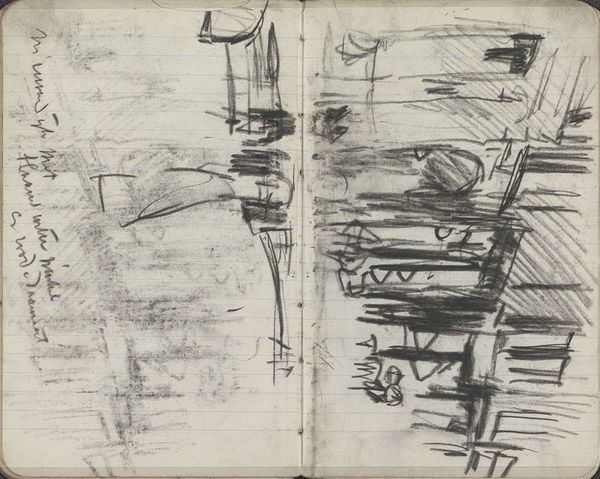
Copyright: Rijks Museum: Open Domain
Editor: So, this is "View of a Street, Possibly in Paris" by Isaac Israels, dated sometime between 1875 and 1934. It's a pencil and graphite drawing. The loose lines create a kind of bustling, undefined atmosphere. What's your interpretation of it? Curator: Well, viewing this through a historical lens, it’s crucial to remember that cityscapes were rapidly changing due to industrialization during this period. Consider how urban planning and visual representations of cities, like this drawing, often served specific socio-political agendas. Do you see anything here that might reinforce or challenge existing power structures within the city? Editor: It’s hard to say with the lack of detail. The street looks empty, almost abandoned. Is that a political statement, or just an aesthetic choice? Curator: Perhaps both. Israels might be subtly critiquing the idealized visions of urban life often presented in official propaganda. An empty street can symbolize alienation, or a void where community should be. Consider who *isn't* represented in this image. Where are the people typically associated with street life – workers, vendors, children? Their absence can be quite telling. How do you think the contemporary audience in Paris might have viewed this depiction, especially if they were experiencing the realities of urban inequality firsthand? Editor: That makes a lot of sense. I hadn't thought about who’s missing from the picture, and how that can be a form of commentary itself. It makes the drawing a lot more layered. Curator: Precisely! Understanding the artwork's potential role within the visual and political culture is key. Editor: Thanks, I'll definitely look at urban landscapes differently now. It is never just a snapshot.
Comments
No comments
Be the first to comment and join the conversation on the ultimate creative platform.
